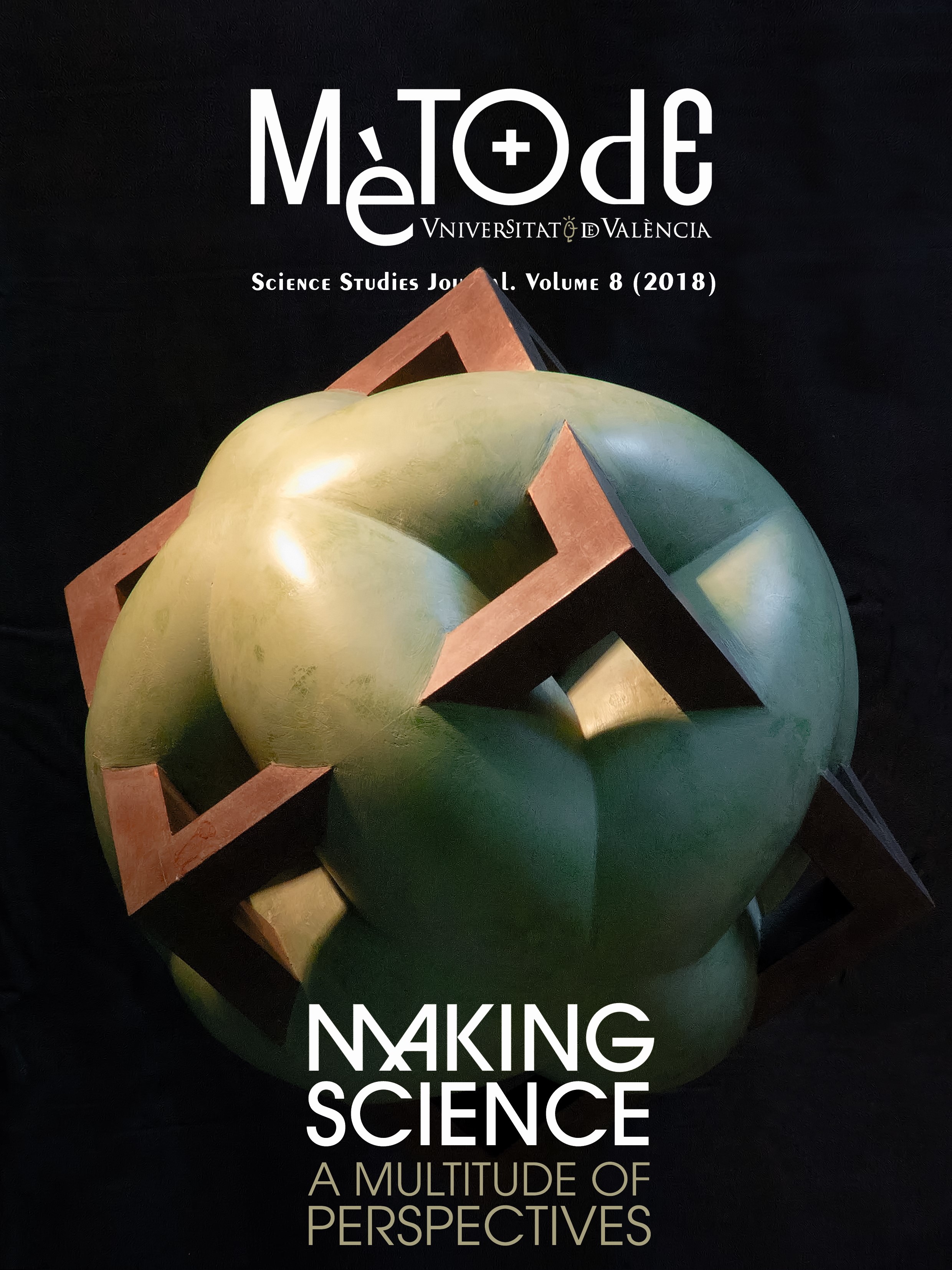El paper del cervell en les decisions financeres: Una visió del camp de la neuroeconomia
DOI:
https://doi.org/10.7203/metode.0.6923Paraules clau:
mercats financers, presa de decisions, neuroeconomia, cervell Resum
Resum
En aquest article, exposem l’important paper que representa la neurociència en un entorn econòmic i financer. En aquest sentit, presentem la neuroeconomia per tal de descriure com els processos de presa de decisions afecten l’activitat cerebral, tot remarcant i posant el focus en la importància de les decisions econòmiques i financeres. En l’article responem algunes qüestions sobre els estímuls neuropsicològics i com afecten les nostres decisions econòmiques, el paper de les emocions en les finances i els factors psicològics que estan presents en els mercats financers. Citem també les principals obres d’investigació sobre neurociència i processos de presa de decisions financeres i destaquem la recerca que s’està duent a terme en aquestes àrees.
 Descàrregues
Descàrregues
 Referències
Referències
Adolphs, R., Gosselin, F., Buchanan, T. W., Tranel, D., Schyns, P., & Damasio, A. R. (2005). A mechanism for impaired fear recognition after amygdala damage. Nature, 433(7021), 68–72. doi: 10.1038/nature03086
Bechara, A., Damasio, H., & Damasio, A. R. (2000). Emotion, decision making and the orbitofrontal cortex. Cerebral Cortex, 10(3), 295–307. doi: 10.1093/cercor/10.3.295
Bertrand, M., Mullainathan, S., & Shafir, E. (2006). Behavioral economics and marketing in aid of decision making among the poor. Journal of Public Policy & Marketing, 25(1), 8–23. doi: 10.1509/jppm.25.1.8
Biel, A., & Gärling, T. (1995). The role of uncertainty in resource dilemmas. Journal of Environmental Psychology, 15(3), 221–233. doi: 10.1016/0272-4944(95)90005-5
Blanchard, O. J., & Watson, M. W. (1982). Bubbles, rational expectations and financial markets. NBER Working Paper Series, 945. doi: 10.3386/w0945
Breiter, H. C., Aharon, I., Kahneman, D., Dale, A., & Shizgal, P. (2001). Functional imaging of neural responses to expectancy and experience of monetary gains and losses. Neuron, 30(2), 619–639. doi: 10.1016/S0896-6273(01)00303-8
Camerer, C. (2007). Neuroeconomics: Using neuroscience to make economic predictions. The Economic Journal, 117(519), C26–C42. doi: 10.1111/j.1468-0297.2007.02033.x
Camerer, C., Loewenstein, G., & Prelec, D. (2005). Neuroeconomics: How neuroscience can inform economics. Journal of Economic Literature, 43(1), 9–64. doi: 10.1257/0022051053737843
Damasio, H., Grabowski, T., Frank, R., Galaburda, A. M., & Damasio, A. R. (1994). The return of Phineas Gage: Clues about the brain from the skull of a famous patient. Science, 264(5162), 1102–1105. doi: 10.1126/-science.8178168
Davidson, R. J., Putnam, K. M., & Larson, C. L. (2000). Dysfunction in the neural circuitry of emotion regulation—A possible prelude to violence. Science, 289(5479), 591–594. doi: 10.1126/science.289.5479.591
Gallese, V., Keysers, C., & Rizzolatti, G. (2004). A unifying view of the basis of social cognition. Trends in Cognitive Sciences, 8(9), 396–403. doi: 10.1016/j.tics.2004.07.002
Gross, J. J., & John, O. P. (2003). Individual differences in two emotion regulation processes: Implications for affect, relationships, and well-being. Journal of Personality and Social Psychology, 85(2), 348–362. doi: 10.1037/0022-3514.85.2.348
Güth, W., Schmittberger, R., & Schwarze, B. (1982). An experimental analysis of ultimatum bargaining. Journal of Economic Behavior and Organization, 3(4), 367–388. doi: 10.1016/0167-2681(82)90011-7
Hsu, M., Bhatt, M., Adolphs, R., Tranel, D., & Camerer, C. F. (2005). Neural systems responding to degrees of uncertainty in human decision-making. Science, 310(5754), 1680–1683. doi: 10.1126/science.1115327
Jin, H., & Zhou, X. Y. (2011). Greed, leverage, and potential losses: A prospect theory perspective. Mathematical Finance, 23(1), 122–142. doi: 10.1111/j.1467-9965.2011.00490.x
Judge, T. A., & Bono, J. E. (2001). Relationship of core self-evaluations traits — self-esteem, generalized self-efficacy, locus of control, and emotional stability — with job satisfaction and job performance: A meta-analysis. Journal of Applied Psychology, 86(1), 80–92. doi: 10.1037/0021-9010.86.1.80
Kahneman, D. (2003). A perspective on judgment and choice: Mapping bounded rationality. American Psychologist, 58(9), 697–720. doi: 10.1037/0003-066X.58.9.697
Kosfeld, M., Heinrichs., M, Zak, P. J., Fischbacher, U., & Fehr, E. (2005). Oxytocin increases trust in humans. Nature, 435(2), 673–676. doi: 10.1038/nature03701
Low, C. (2004). The fear and exuberance from implied volatility of S&P 100 Index Options. The Journal of Business, 77(3), 527–546. doi: 10.1086/386529
Mayer, J. D., Roberts, R. D., & Barsade, S. G. (2008). Human abilities: Emotional intelligence. Annual Review of Psychology, 59, 507–536. doi: 10.1146/annurev.psych. 59.103006.093646
Mehta, P. H., & Beer, J. (2010). Neural mechanisms of the testosterone–aggression relation: The role of orbitofrontal cortex. Journal of Cognitive Neuroscience, 22(10), 2357–2368. doi: 10.1162/jocn.2009.21389
Rick, S., & Loewenstein, G. (2008). The role of emotion in economic behavior. In M. Lewis, J. M., Haviland-Jones, & L. Feldman Barret (Eds.), Handbook of emotions. Third edition (pp. 138–156). Nueva York, NY: Guilford Press.
Shiv, B., Loewenstein, G., Bechara, A., Damasio, H., & Damasio, A. R. (2005). Investment behavior and the negative side of emotion. Psychological Science, 16(6), 435–439. doi: 10.1111/j.0956-7976.2005.01553.x
Tseng, K. C. (2006). Behavioral finance, bounded rationality, neuro-finance, and traditional finance. Investment Management and Financial Innovations, 3(4), 7–18.
Westerhoff, F. H. (2004). Greed, fear and stock market dynamics. Physica A: Statistical Mechanics and its Applications, 343, 635–642. doi: 10.1016/j.physa.2004.06.059
Zak, P. J., Kurzban, R., Ahmadi, S., Swerdloff, R. S., Park, J., Efremidze, L., ... Matzner, W. (2009). Testosterone administration decreases generosity in the ultimatum game. PLoS One, 4(12), e8330. doi: 10.1371/journal.pone.0008330
Descàrregues
Publicades
Com citar
-
Resum3817
-
PDF 1210
Número
Secció
Llicència
![]()
Tots els documents inclosos en OJS són d'accés lliure i propietat dels seus autors.
Els autors que publiquen en aquesta revista estan d'acord amb els següents termes:
- Els autors conserven els drets d'autor i garanteixen a la revista el dret a la primera publicació del treball, llicenciat baix una llicència de Reconeixement-NoComercial-SenseObraDerivada 4.0 Internacional de Creative Commons, que permet a altres compartir el treball amb un reconeixement de l'autoria del treball i citant la publicació inicial en aquesta revista.
- Es permet i s'anima els autors a difondre la versió definitiva dels seus treballs electrònicament a través de pàgines personals i institucionals (repositoris institucionals, pàgines web personals o perfils a xarxes professionals o acadèmiques) una vegada publicat el treball.





